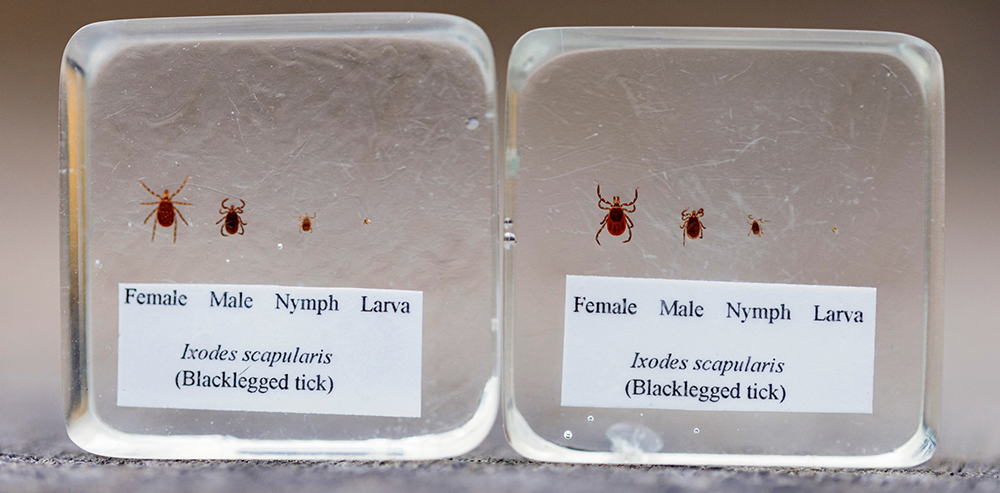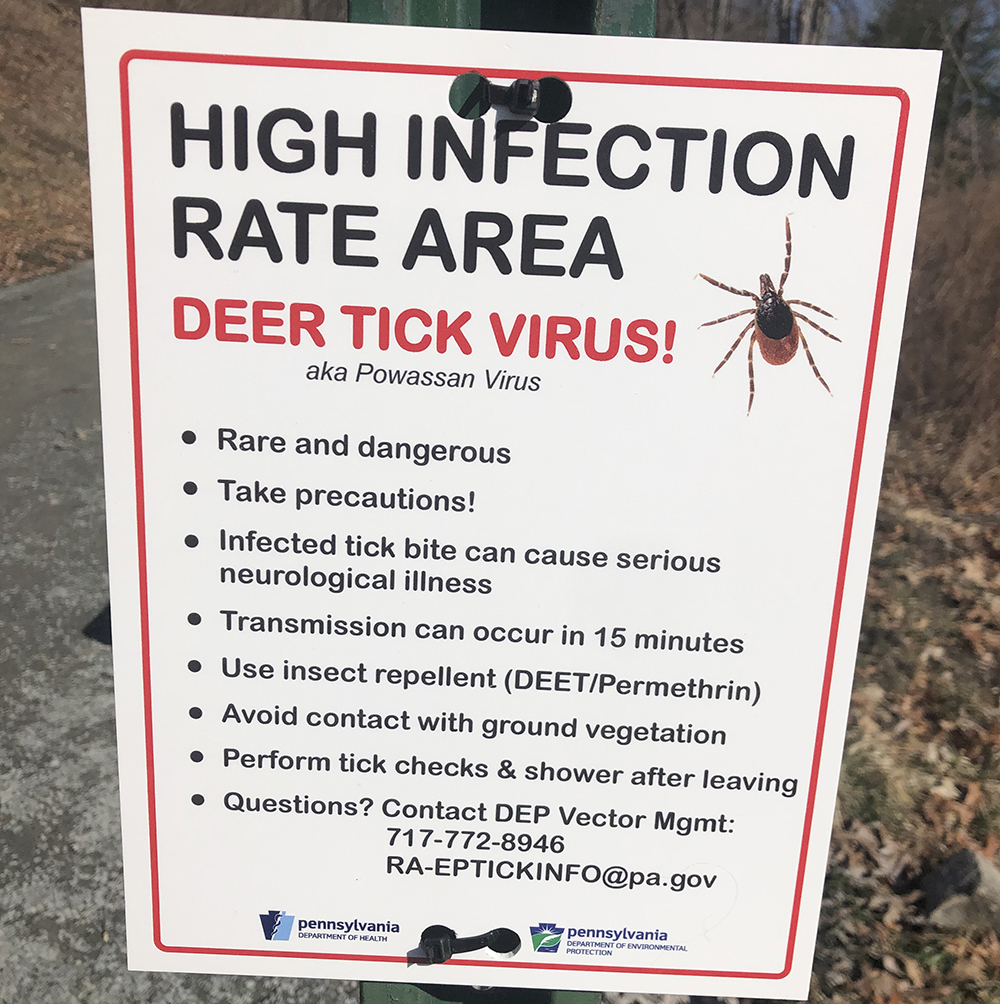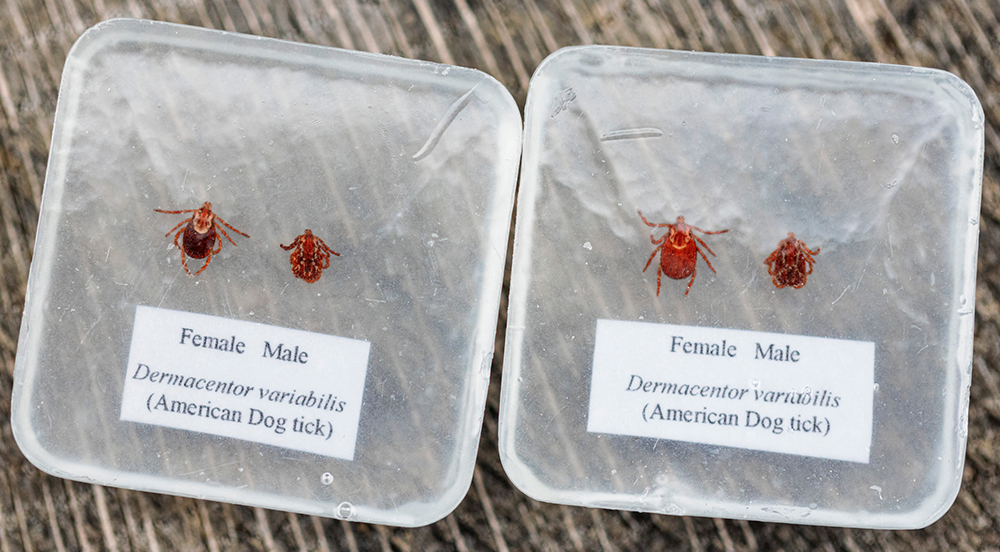Spring is the start of a busy time for the Department of Environmental Protection (DEP). As residents and tourists get outside to enjoy warmer temperatures, they’re greeted by pests.
DEP actively implements
pest control measures across the commonwealth so both residents and visitors can enjoy their time outdoors without being inconvenienced by those summer bugs.
Black Fly spraying is conducted at the start of warmer months, and the
West Nile Virus Control Program operates year round to combat mosquitoes and prevent the spread of West Nile Virus (WNV). When it comes to ticks, extermination however is unheard of.
Unfortunately, controlling ticks is much harder to do. DEP Tick Specialist Christian Boyer explains, “ticks are very hard to control due to them always being on land, and widely distributed and easily transported by hosts. Black flies and mosquitoes have a larval component in their lifecycle which makes them easier to conduct targeted control in the rivers and streams and stagnant water habitats. It would be ineffective and cost prohibitive to have a statewide control program for ticks.”

Tick Surveillance Program
Although there isn’t a method for tick removal, DEP still highlights their awareness of ticks in Pennsylvania through their
Tick Surveillance Program. Active tick surveillance is conducted statewide by DEP, with a specific focus on Blacklegged Ticks (commonly known as ‘Deer Ticks’). Deer Ticks can transmit Lyme Disease and Deer Tick Virus (DTV) to humans. The Tick Surveillance Program operates year-round because Deer Ticks are even active in the winter and can survive in low temperatures.
Surveillance activities of Blacklegged Ticks are broken into two main seasons based on their life stage:
- the nymphal Blacklegged Tick survey - spans from April through August
- the adult Blacklegged Tick survey - begins in October and extends into the spring
Tick surveillance and collection is conducted in areas that are frequently visited by the public. Those areas include municipal parks and properties, State Parks, State Forest Lands, and State Game Lands. DEP has developed signage for tick sampling areas to educate the public as they enjoy the outdoors.

Species of Ticks
Many other species of ticks are monitored and collected in addition to the nymphal Blacklegged Tick. A variety of
tickborne diseases can be transmitted from all different species.
“Other species of ticks are targeted to determine their density, distribution, and expansion throughout the Commonwealth. Some of these ticks include American Dog Ticks, Asian Longhorned Ticks, Lonestar Ticks, and Gulf Coast Ticks. The Blacklegged Ticks are tested for many pathogens including the causative agents for Lyme Disease, Anaplasmosis, Babesiosis, Hard Tick Relapsing Fever, and Deer Tick Virus. The results are then given to the
Department of Health so they can develop Health Alerts and Health Advisories to be distributed to physicians throughout the Commonwealth,” says Boyer.

It is important to exercise caution in certain types of habitats where ticks can be prominent:
- Blacklegged Tick adults - active in the fall, winter, and early spring; can be found in low lying vegetation lining paths, or low understory vegetation.
- Nymphal Blacklegged Ticks - found in April through August in leaf litter.
- American Dog Ticks - found predominately in tall grasses, meadows, etc. and more open spaces from April-July.
- Asian Longhorned Ticks - found in the same habitats as Blacklegged Ticks; adults are active from May-August and the nymphs are present April through August.
- Gulf Coast Ticks – found in drier environments ranging anywhere from shaded woods to sunny meadows. Collected in July and August, but peak activity depends on geographic location.
When heading outdoors this summer, remember to take extra steps to
protect yourself from ticks. Recommended precautions for anyone venturing outdoors include:
- Apply tick repellents containing
permethrin to clothing and
EPA-registered insect repellents such as DEET to exposed skin before entering the outdoors. Reapply as needed according to product label instructions.
- Wear light-colored outer clothing and tuck shirts into pants, and pants into socks.
- Walk in the centers of trails and avoid wooded and brushy areas with low-growing vegetation and tall grasses that may harbor ticks.
- After returning home, remove all clothing, take a shower, and place clothing into the dryer on high heat to kill any lingering ticks. Examine gear such as backpacks for ticks.
- Conduct a full-body tick check using a hand or full-length mirror, including hidden areas such as the scalp, ears, armpits, belly button, and between the legs.
- Check over any pets exposed to likely tick habitats each time they return indoors.
- If a tick is found attached to your skin, use tweezers to remove it carefully, including the head. Monitor for symptoms and contact your doctor with any questions.